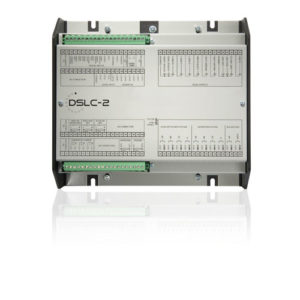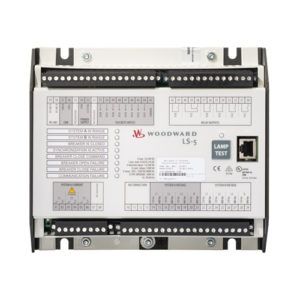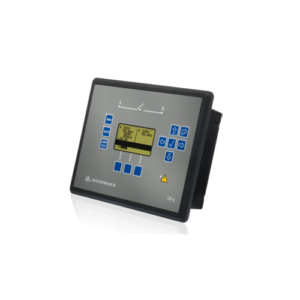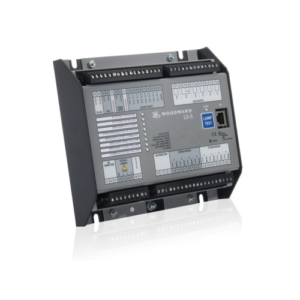The MSLC-2™ functions with the DSLC-2™ control to provide synchronization and load
control across Utility and Intertie breakers via
Ethernet communication.
| Aantal schakelaars | 1 |
|---|---|
| Uitvoering | Geen bedieningspaneel |
This combination, 32 DSLC-2’s and 16 MSLC-2’s, provide multiple unit, multiple segment, utility and intertie power management for complex power systems. Controls plant wide Import / Export levels while always providing bump-less load transfers with utility.
The MSLC-2 control combines synchronization, dead bus closing, utility/intertie load sensor, baseload control, import/export control, VAR, power factor, and a master process control in one powerful package.
The MSLC-2 provides phase matching or slip frequency synchronization, with voltage matching, across a utility or intertie breaker. The MSLC-2/DSLC-2 combination can handle multiple utility connections with a maximum of 8 bus segments in one application.
The MSLC-2’s load sensor and load control sense true RMS power and provide a bump-less loading and unloading against a utility grid. Baseload, import/export, process, and utility unload modes control the KW power between different power sources at the same time controlling the reactive power, VAR and power factor. Reactive power is also ramped on and off for the smoothest load transactions between power grids.
The MSLC-2 communicates via Ethernet, with redundant Ethernet now available, to control real and reactive loading against the utility by DSLC-2 equipped generators. The tie breaker mode allows synchronization between multiple generator systems. Segments are connected and power can be measured across an intertie, but no load control is functional when in
Tie breaker operation.
Features
• One MSLC-2 can provide master control for up to 32 DSLC and an additional 15 MSLC-2 in a system.
• Two dedicated Ethernet lines for precise system communications between all DSLC-2’s and MSLC-2’s on the system.
• Ethernet Modbus TCP for remote control and monitoring by PLC or DCS system.
• Redundant Ethernet communications for enhanced reliability.
• Master MSLC-2 redundancy, loss of communications with the designated MSLC-2 master initiates control hand off to the next designated MSLC-2 master.
• The MSLC-2 hardware is adjustable for multiple applications.
• Slip frequency or voltage phase matching synchronizing fully selectable with dead bus option in both directions provide full flexibility for intertie and main-tie-main applications.
• Having functions integrated into one box eliminates the need for redundant sensors (like PTs, CTs, and MOPs) that connect to individual modules such as the load sensor and synchronizer.
• Digital signal processing makes the MSLC-2 resistant to power line distortions and harmonics.
• Three-phase true RMS power sensing provides accurate readings even with unbalanced phase loading andvoltage fluctuations.
• Export/import control over multiple utility MSLC-2’s in same segment.
• The Woodward ToolKit™ software allows flexible setup using the same basic menu tree as the original MSLC plus an overview screen. No hand held programmer is required. Graphical overview of generators and bus bar parameters with trending makes the MSLC-2 commissioning friendly.
• The Toolkit can be accessed either via one of the Ethernet ports or via RS-232 port.
• Phase angle compensation provides adjustment for additional deviation correction across a transformer.
• The system update feature allows for system reconfiguration.

DSLC-2 synchronizes and controls the generator loading for up to 32 three phase AC generators using the integrated Ethernet communication network.

Woodward’s LS-5 Series relays are synchronizer controllers with integrated mains decoupling and protection features.

Woodward’s LS-5 circuit breaker, synchronization & control unit with marine approval

Woodward’s LS-5 circuit breaker, synchronization & control unit with marine approval
© Summit Power 2024